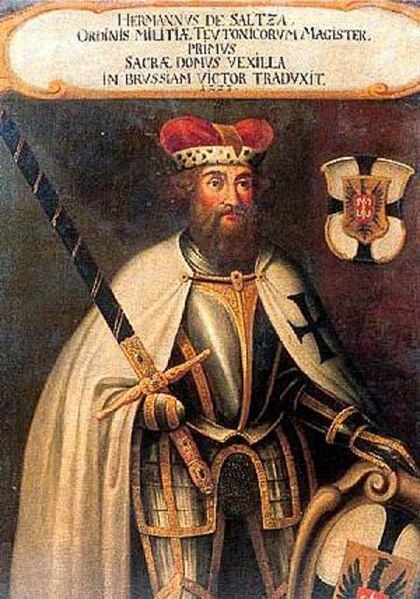Baltic German nobility was a privileged social class in the territories of today's Estonia and Latvia. It has existed continuously since the Northern Crusades and the medieval foundation of Terra Mariana. Most of the nobility were Baltic Germans, but with the changing political landscape over the centuries, Polish, Swedish and Russian families also became part of the nobility, just as Baltic German families re-settled in locations such as the Swedish and Russian Empires. The nobility of Lithuania is for historical, social and ethnic reasons separated from the German-dominated nobility of Estonia and Latvia.
The cover of the Baltisches Wappenbuch (Baltic Armorial)
Järlepa (German: Jerlep) manor house, Estonia, a typical Baltic manor house.
Bishop of Riga Albert von Buxhoeveden
Hermann von Salza, fourth Grand Master of the Teutonic Order
Baltic Germans are ethnic German inhabitants of the eastern shores of the Baltic Sea, in what today are Estonia and Latvia. Since their resettlement in 1945 after the end of World War II, Baltic Germans have markedly declined as a geographically determined ethnic group in the region.
Russian Baltic governorates
Duke's Rundāle Palace
The many manors in Estonia and Latvia testify to the former splendor of the Baltic German landowning class (von Stackelberg family). Pictured: Vääna manor, Estonia.
Mežotne Palace (von Lieven family) in Latvia








